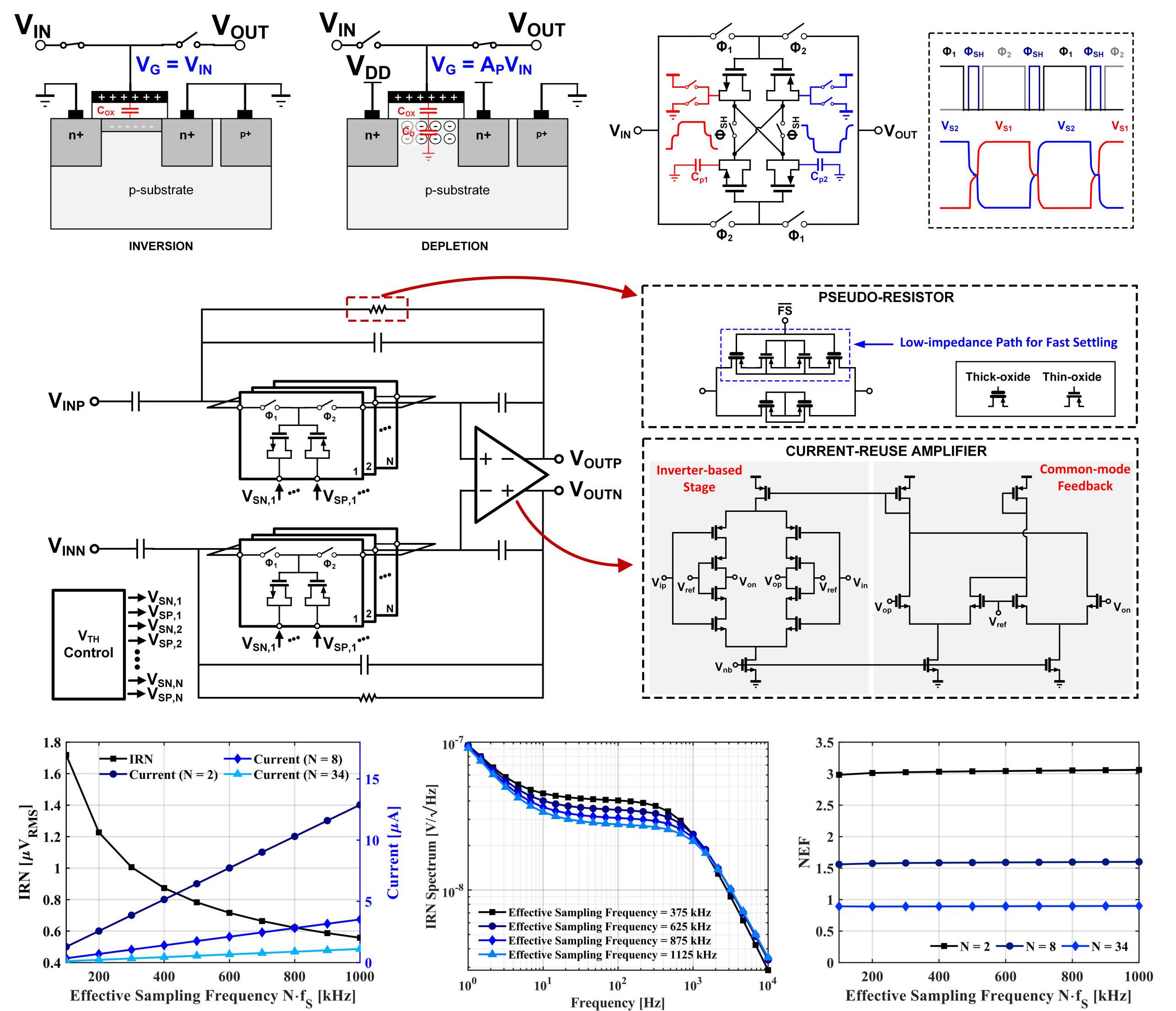Energy-efficient Parametric Low-noise Amplifier

Miniaturized low-power wireless systems equipped with sensing, computing and communication capabilities enable a wide variety of applications in the IoT era, ranging from environmental monitoring to healthcare. In this context, maximizing the energy efficiency while preserving the desired performance is a critical design issue, as the available energy is strictly limited by the requirements on the form factor. At the same time, mm-sized medical devices that have recently opened new frontiers for the treatment of several neurological disorders (e.g., epilepsy, Alzheimer, Parkinson’s disease) also suffer from a very limited power budget, arising from rigid safety regulations on the maximum heat dissipation in human tissue. These applications pose severe requirements on the input-referred noise (IRN) of the sensor-interface circuits, as the system receives a µV-level electrical signal from the sensor. Consequently, the low-noise amplifier (LNA), adopted as the first stage of the analog front-end (AFE), typically dominates the overall power consumption because it suffers from the most stringent input-referred noise specification.
We presented an energy-efficient low-noise amplifier, achieving 0.89 noise efficiency factor (NEF) using discrete-time parametric amplification. The power consumption is reduced by adopting a 34-phase stepwise charging technique and the sampling-induced input-referred noise is minimized by oversampling the input signal. Time-interleaving multiple parallel stages allows implementing the multiphase soft-charging scheme without causing any significant penalty in terms of area. A second current-reuse inverter-based amplification stage is designed to provide high gain, while its contribution to the total input-referred noise is attenuated by the preamplifier gain. The overall NEF is 1.76 and the total power consumption is 1.73 µW